ISN’T THIS WHERE
CHARLES HADDON SPURGEON
ONCE PREACHED?
THE ELEPHANT
My father loved the Elephant & Castle that erstwhile Piccadilly of South London. It was here that Charlie Chaplin and Michael Faraday were born and spent their early years and where my father also spent his formative years. The Elephant, as the area is known, came to prominence with the building of London’s bridges and with the need for connecting roads across South London. The area began to become built-up in Victorian times and soon became a centre of entertainment as well as for living.
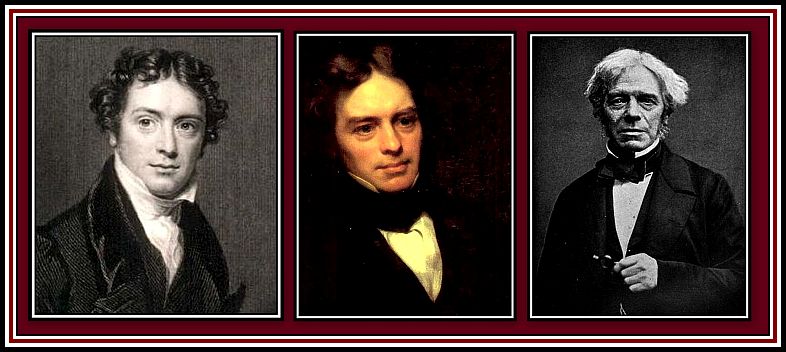 Michael Faraday, F.R.S. – born: 22nd September, 1791, died: 25th August, 1867
Michael Faraday, F.R.S. – born: 22nd September, 1791, died: 25th August, 1867
Chemist and physicist whose major discoveries where in the fields of Electrolysis, Electromagnetic Induction
& Diamagnetism
Left: Michael Faraday statue outside the Institution of Engineering & Technology at Savoy Place, London;
Top Centre: London Transport Underground (Tube) Locomotive, Michael Faraday with name plate below;
Bottom Centre: Twenty Pound Note (1991-2001); Top Left: Gravestone at Highgate Cemetery;
and Bottom Left: a short time before his death.
Michael Faraday declined a knighthood on two occasions and burial in Westminster Abbey,
but accepted Queen Victoria‘s offer of residence at Hampton Court, where he lived until he died.
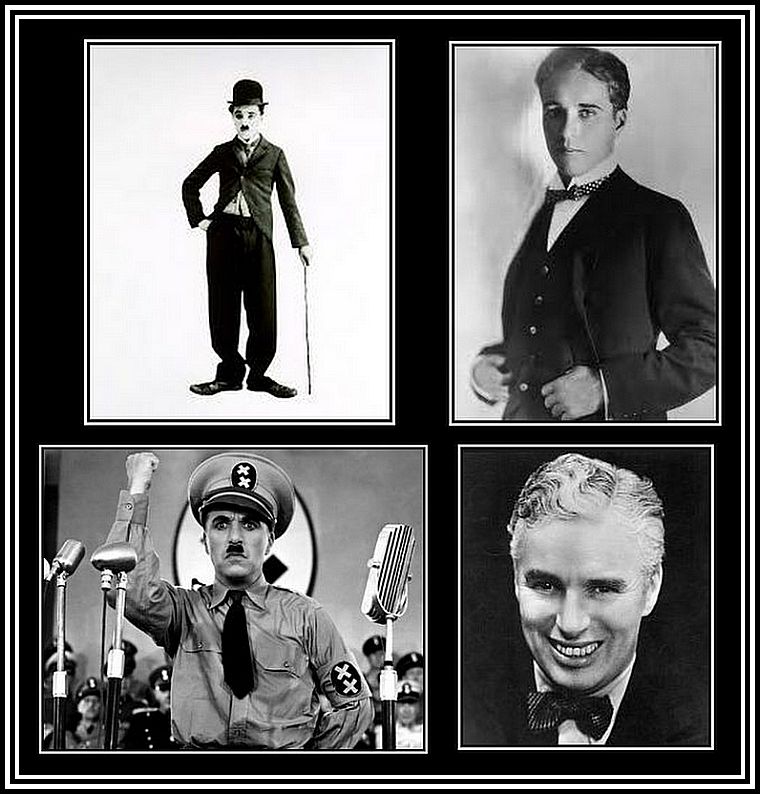 Charles (Charlie) Chaplin, KBE – born: 16th April, 1889, died 25th December, 1977 He was a Victorian Music Hall artist, actor, filmmaker and co-founder of United Artists film studios and whose character, The Little Trap, became an icon recognisable throughout the world
Charles (Charlie) Chaplin, KBE – born: 16th April, 1889, died 25th December, 1977 He was a Victorian Music Hall artist, actor, filmmaker and co-founder of United Artists film studios and whose character, The Little Trap, became an icon recognisable throughout the world
I remember The Elephant as a child as being a huge expanse where the great highways of South London came together, where endless number of double-decker trams rattled and crashed over points producing sparks and where great theatres of entertainment and lively public houses, including the Elephant & Castle Public House once stood.
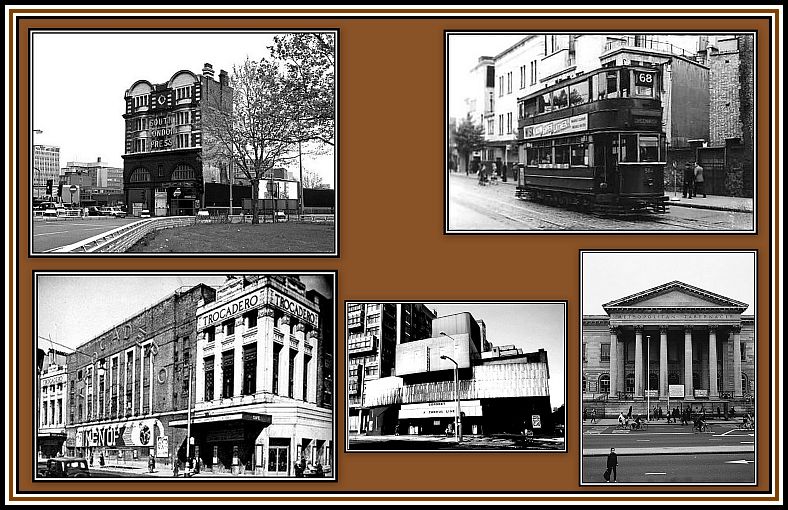 My Elephant & Castle & How I remember it
My Elephant & Castle & How I remember it
Top Left: The Underground Station; Top Right: A tram;
Bottom Left: The Trocadero; Bottom Middle: The old Odeon; and Bottom Right: The Tabernacle
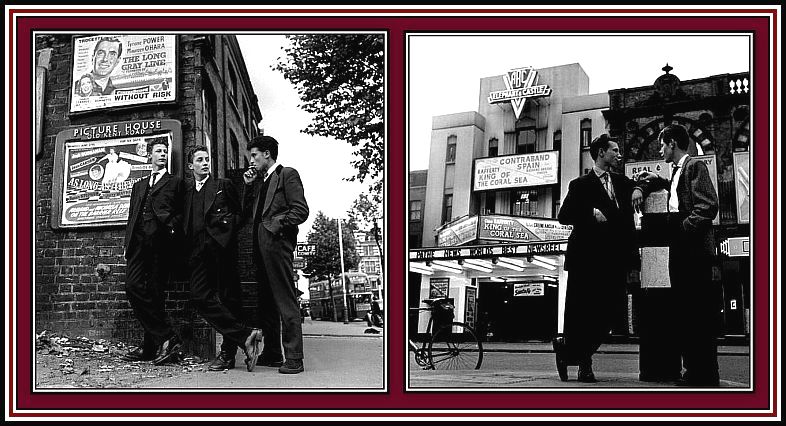 Two great photographs of Elephant Teds, which I found at the wesbite, The Edwardian Teddy Boy
Two great photographs of Elephant Teds, which I found at the wesbite, The Edwardian Teddy Boy
Unfortunately, I was not able to find a contact address for the authors of this site and so could not gain their permission to put these great photographs here. If you know of a contact address, please let me know. Note the great cinema advertisement boards in the photograph on the left and the terrific facade of the ABC cinema on the right.
Even Shirley Temple had heard of the area.
——oooOOOooo——
Tragically, during the late 1950s, someone or some group at a Council or Ministry decided that the area was ripe for redevelopment. As a result, according to the locals and my father, The Elephant was destroyed.
Top Left: Ariel view; Top Right: northern roundabout with Faraday Memorial, which is apparently illuminated at night and contains a London Transport substation; it was designed by Brutalist architect, Rodney Gordon in 1959 and built in 1961;
Bottom Left: southern roundabout with the Tabernacle on the left; and
Bottom Right: site of the Trocadero, Metro Central Heights
Basically the area became nothing more than a roundabout, a throughway to speed traffic about the city. To be honest, much of the area had been severely damaged as a result of bombing during the Second World War. However, the architectural style chosen for the buildings replacing the damaged and other perfectly acceptable ones proved to be completely lacking in all aspects of charm. The architectural style chosen was Modernism and was the work of architect, Erno Goldfinger. The buildings were typical of those of their time and were perhaps the most boring and graceless to ever disturb the skyline of London. Sadly, the materials used in the construction of these buildings looked to my untrained eye to be of the poorest quality and over the years have weathered badly.
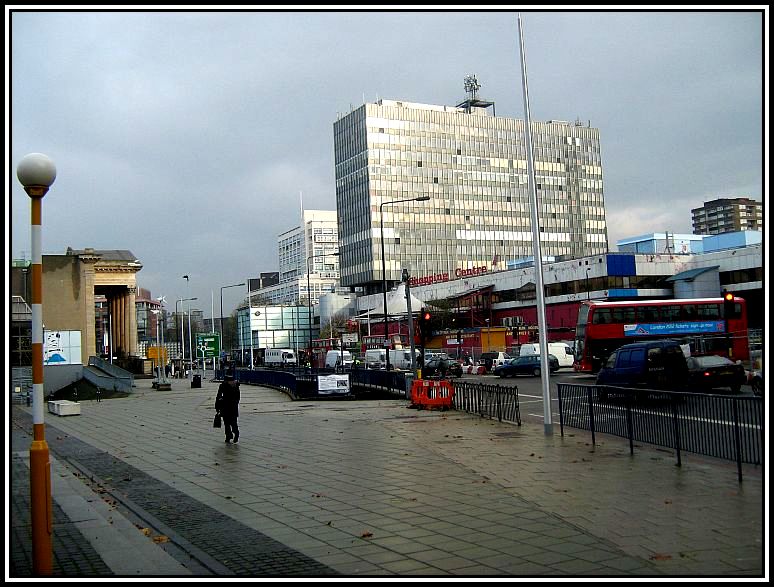 The Shopping Mall opposite The Tabernacle
The Shopping Mall opposite The Tabernacle
Part of the redevelopment project of the Elephant included a shopping centre. The centre was the first covered shopping mall in Europe and was to have 120 shops on three floors and an underground car park. The Group that oversaw this project claimed the mall to be:
the largest and most ambitious shopping venture ever to be embarked upon in London. In design planning and vision it represents an entirely new approach to retailing, setting standards for the sixties that will revolutionise shopping concepts throughout Britain.
At the time of its opening in March 1965, only 29 of the 120 shops were open, but worse, far worse, budget restrictions had caused the scaling down of the size of the building and, worst of all, drastic changes to its finishes.
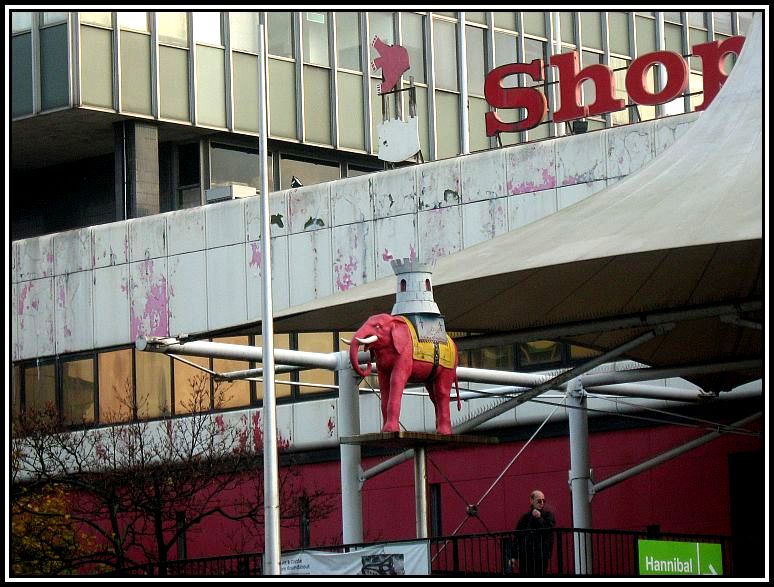 Peeling paint and chipped figures at the The Shopping Mall to revolutionise shopping in Britain
Peeling paint and chipped figures at the The Shopping Mall to revolutionise shopping in Britain
Despite the clattering sounds of the old trams and the fear that the sparks produced as they passed over the points caused me when I visited the area with my parents and despite the ugly buildings now present and the even louder sounds of the traffic as it roars around the roundabout and along the throughway arterial roads now seemingly given over totally to traffic movement with no concern for those on foot, there remains one building, one beacon in this scene of urban blight that I liked as a child and which I still find attractive in its design. This is the Metropolitan Tabernacle, which stands proud before the miserable Shopping Mall that was once thought to revolutionise shopping concepts.
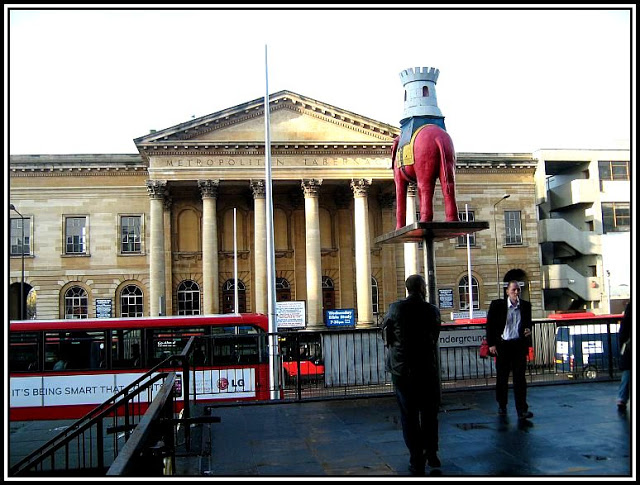 The Metropolitan Tabernacle from The Shopping Mall
The Metropolitan Tabernacle from The Shopping Mall
As a child, I used to look at the Tabernacle and marvel. I always admired its design. I liked the columns especially. At first I had no idea that it was a church and thought it must be a government building of some kind. Later, once I learned it was a church, I had no idea what denomination it was.
As a child I knew of the Church of England and the Jewish faith. I had been baptised at St. John Church on Bethnal Green where my mother had also been baptised and I went to Sunday School together with some school friends at Westminster Central Hall, the main Methodist Church. Despite this Christian background, I spent most of my time with Jews for I lived in Whitechapel, which at the time was populated mostly by Jews. My early classes at school were filled with Jews and we, Christians, were in the minority. And so I grew up not only learning about the acts and teachings of Jesus and His Disciples, but also those of the Prophets and the Festivals essential to Judaism.
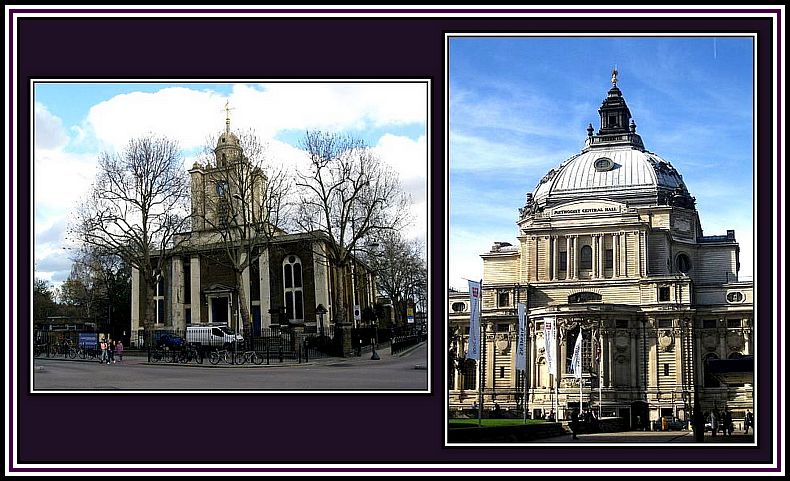 Left: St. John on Bethnal Green; Right: Westminster Central Hall
Left: St. John on Bethnal Green; Right: Westminster Central Hall
Despite my religious background, I knew nothing of the fragmented branches of either Christianity or Judaism. Had I thought about it at that time, I would have said that the world was made up mostly of Christians and Jews and seasoned with an occasional Hindu, Sikh and Muslim since these faiths were represented in both the area where I lived and at my school.
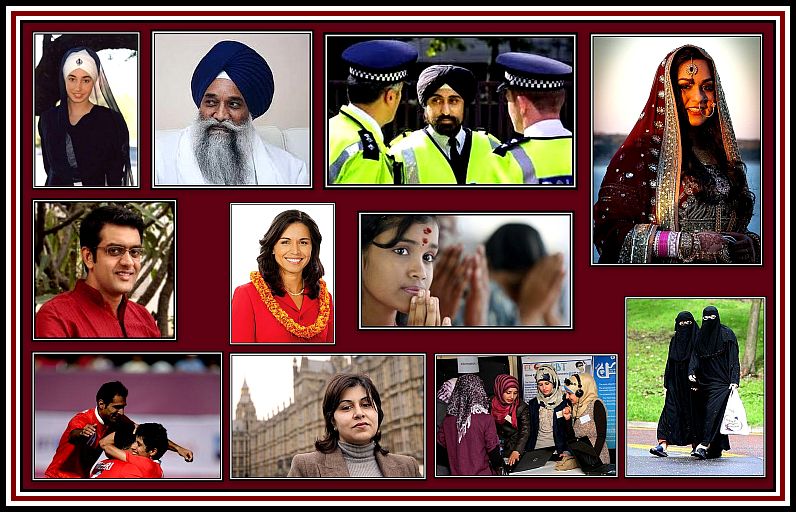 Top Row: Sihks; Middle Row: Hindus; and Bottom Row: Muslims
Top Row: Sihks; Middle Row: Hindus; and Bottom Row: Muslims
However, one thing I did notice as a child was the overall architectural style of the churches of South London since they were unlike those that I knew in North and East London. Besides having no Great Cathedrals, if one does not include Southwark Cathedral, which is all but hidden by the railway bridge leading out of London Bridge Station and could easily be missed by the passerby, that part of London has no St. Martin-in-the-fields-type churches. No, or few, churches with spires or towers. South London seemed to have spawned churches that had, what I used to call, that Tabernacle look, since to my untrained eye, they were simple and not as grand that I thought, at the time, a church should look. Needless to say, during these years, I found most of these churches to be decidedly unpleasing to look at.
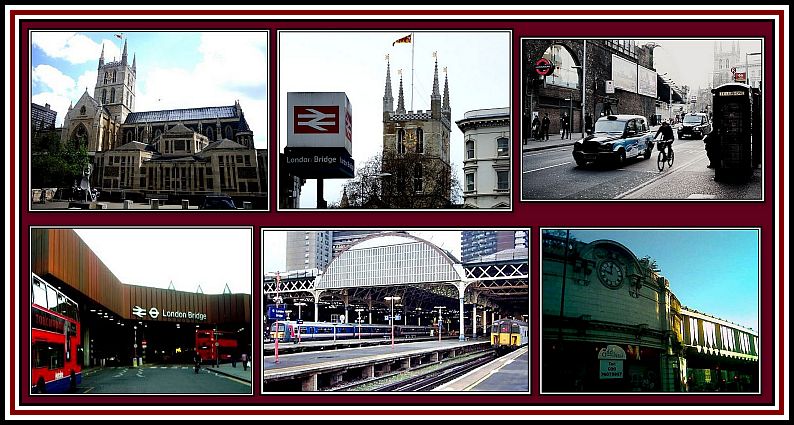 Southwark Cathedral and London Bridge Station
Southwark Cathedral and London Bridge Station
Top & Bottom Right: show the bridge that interferes with the view of the Cathedral
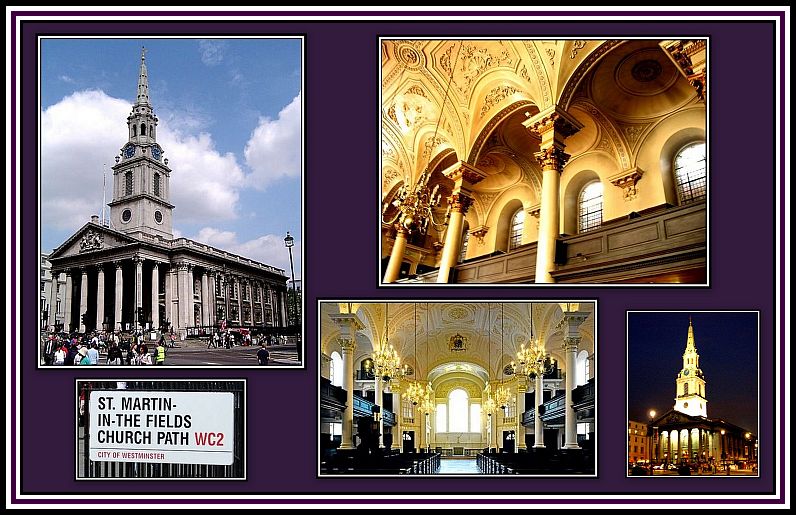 The Church of St. Martin-in-the-Fields
The Church of St. Martin-in-the-Fields
Once I got older, on the extremely rare occasions when I went to South London, I began to dare to venture into a Tabernacle or two. Once inside, I noticed that they were remarkably plain and lacking in what I considered suitable decoration. At this time I was deeply involved in my studies and was far more interested in living life rather than in contemplating its meaning. During these years, I was lucky enough to visit many of the Great Cathedrals of England and of other European countries and even some in North America. As a result, my tastes had become acclimatised to that ornate majesty seen in their interiors, which attracts vast numbers of visitors each year. Sadly for me, during these years I did not take the time to stop and linger in the simple Tabernacle and so failed to appreciate the spiritual beauty that many of such Houses of Worship possess and can inspire.
Built in the late 19th Century and destroyed by bombing in 1944. The pastor, Archibald G. Brown, had been recommended by Charles Haddon Spurgeon. He founded soup kitchens and a boys school in East London and a holiday home for girls at Herne Bay, which my mother stayed at for eighteen months during her childhood when it was determined that she was malnourished and mistreated.
The Old Vic and Waterloo Bridge
For many years afterwards, whenever I walked across Waterloo Bridge and continued on my way to the Old Vic Theatre, I would look at the church I always passed en route and always made a mental note to go inside sometime. However I paid little real attention to its architecture. Evidently unimpressed, I moved on quickly, as I obviously did not wish to arrive at the theatre late.
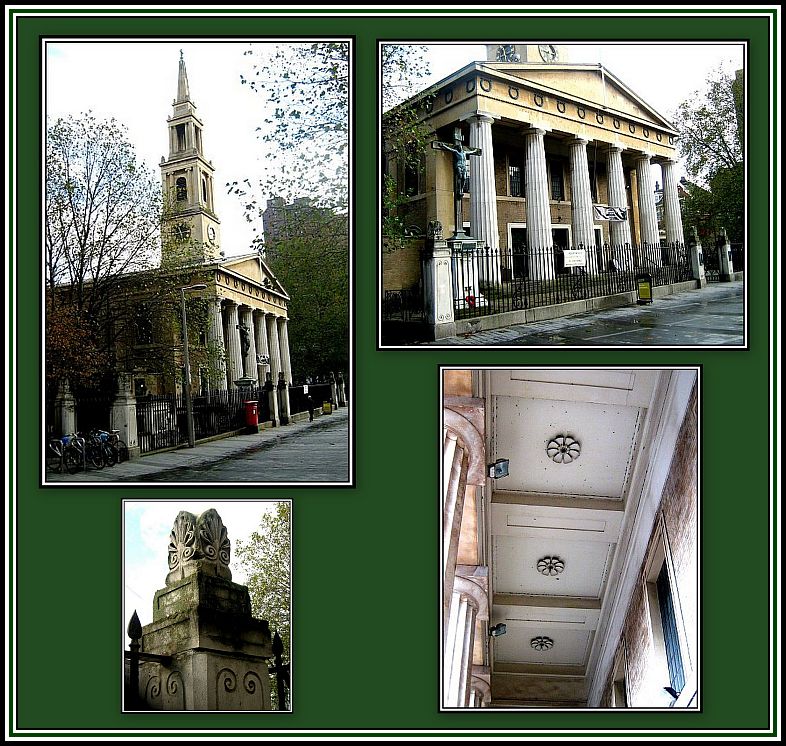 St. John the Evangelist Church, Waterloo Road
St. John the Evangelist Church, Waterloo Road
On other occasions, I found myself sat on buses, which after flying around the Elephant at top speed and after slamming on the breaks without warning, came to a grinding halt either before the great Metropolitan Tabernacle or else on the other side of the road. Once I regained my composure from being flung about the bus, I used the few seconds available to me to look at the Tabernacle before being slung forward by the momentum generated, as we roared off again.
As I said, it was not until a couple of years ago that I decided to re-look at the areas so loved by my father, and this time, to pay some attention. These areas had been cruelly dismissed by me as lacking interest since I could not believe that anything in South London could possibly compare to that found in the East End. At this time, plans for the redevelopment of the Elephant were just beginning to be discussed and a new skyscraper in the area was almost complete. And so, I crossed the river again and started my rediscovery at the Elephant before it was changed again and also to look at the new oddly shaped tower that seemed so very out of place on the London skyline and which had been named, The Shard.
I arrived at the Elephant with every intention of making a quick exploration of the area and then walking towards The Shard, the latest skyscraper to disturb the London skyline, which was almost complete. I went into the Shopping Mall that was supposed to revolutionise shopping concepts in Britain. The mall could only be described as miserable and I quickly made my way out onto the patio that overlooked the main road, Newington Butts, which leads south from the Elephant’s northern roundabout.
Before me was the monstrous new stylised red-coloured Elephant meant to represent the area. However, beyond this monstrosity I saw the Metropolitan Tabernacle on the other side of the road. I stopped and looked at the building. It was amazing that despite the ruin of this once lively and interesting area of London, the Tabernacle remained aloof and distant from the disaster brought about by the total insensitivity of town planners. I stood and looked at the building and appreciated its dignity and calm majesty. As I did an old couple walked by and stopped to look too. I asked them if they were from the area. They were and we discussed the changes. They remembered the trams and the Trocadero and the old Elephant public house and, as they did, they shook their heads. I watched them disappear into the mall. And after a sigh or two, I thought it was time to actually cross the road and look at this building properly for the first time.
And so, with every wish to discover something modern, I found myself discovering something from the past, which would bring me a surprise and joy.
——oooOOOooo——
Click here to go to PART TWO – WHO WAS CHARLES HADDON SPURGEON
——oooOOOooo——
Click here to return to
ISN’T THIS WHERE CHARLES HADDON STURGEON ONCE PREACHED? Home Page
——oooOOOooo——
Click here to return to the TABLE OF CONTENTS
——oooOOOooo——
2 thoughts on “THE ELEPHANT”
Leave a Reply

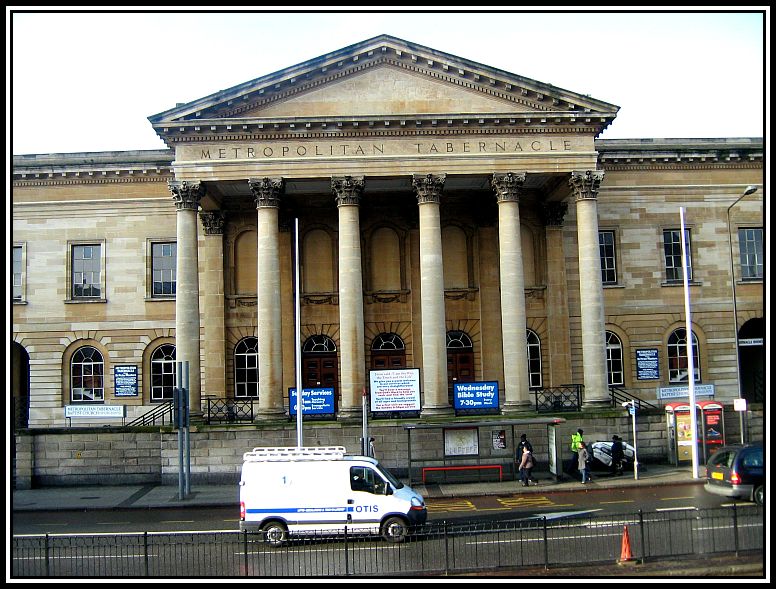
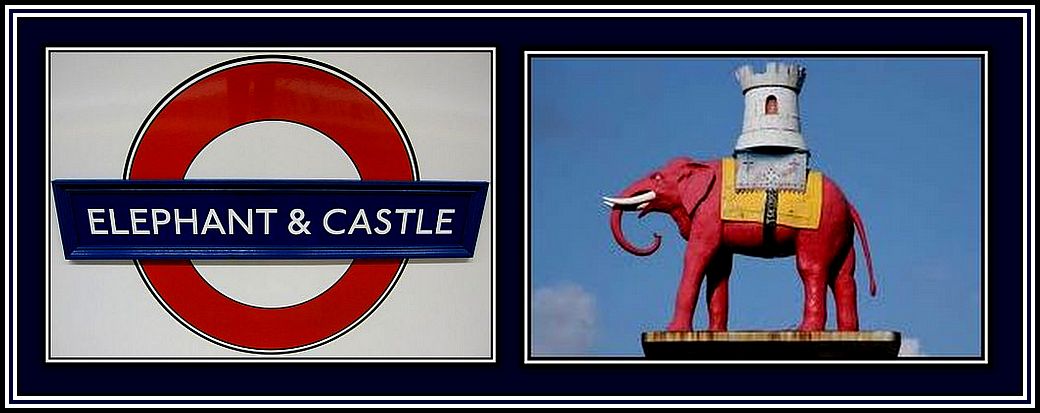
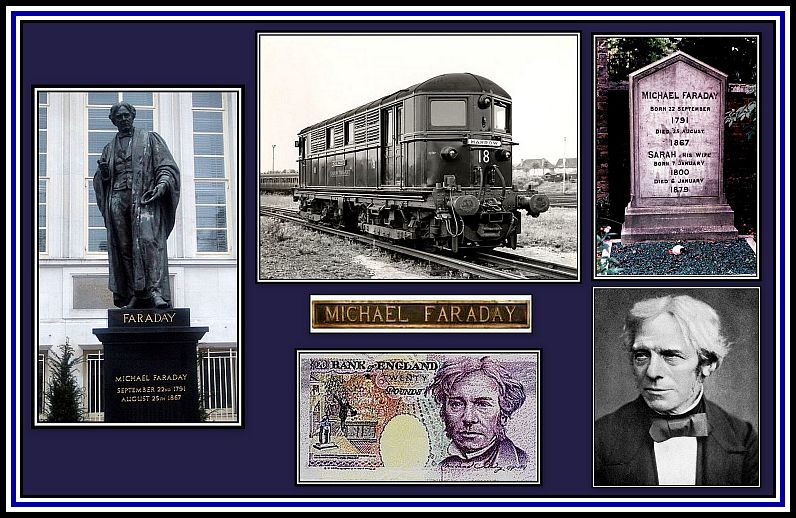
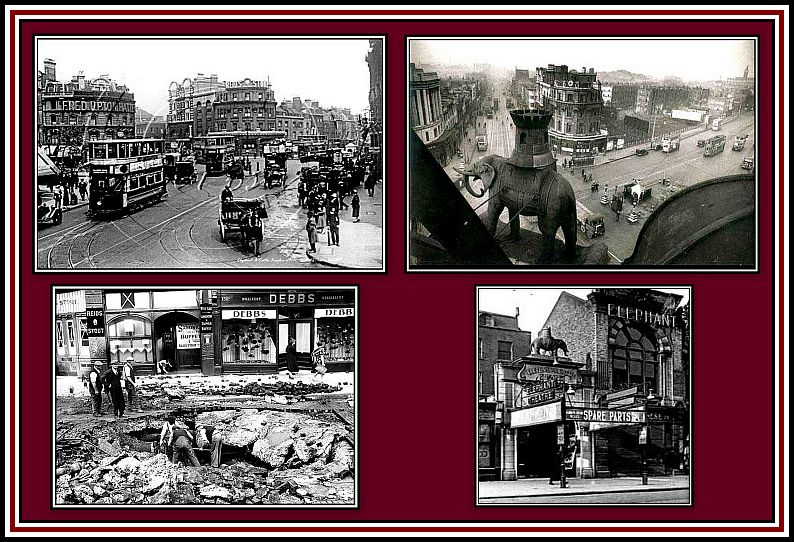
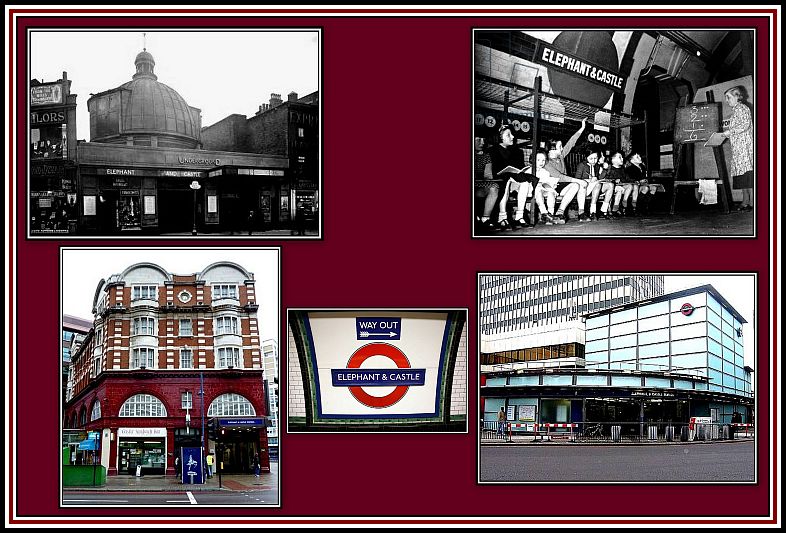
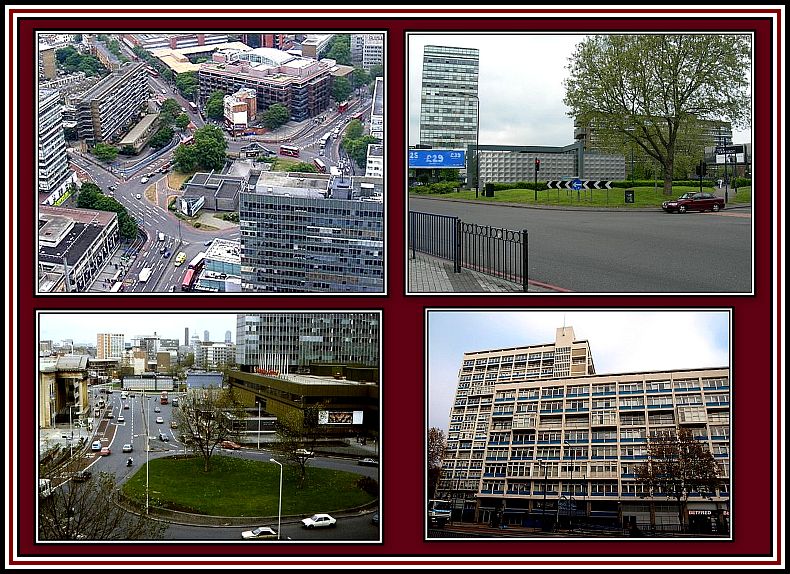
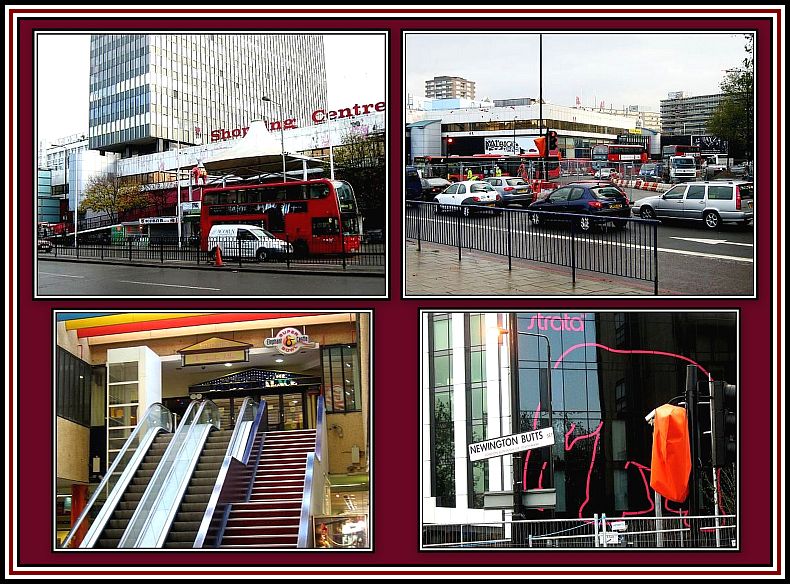
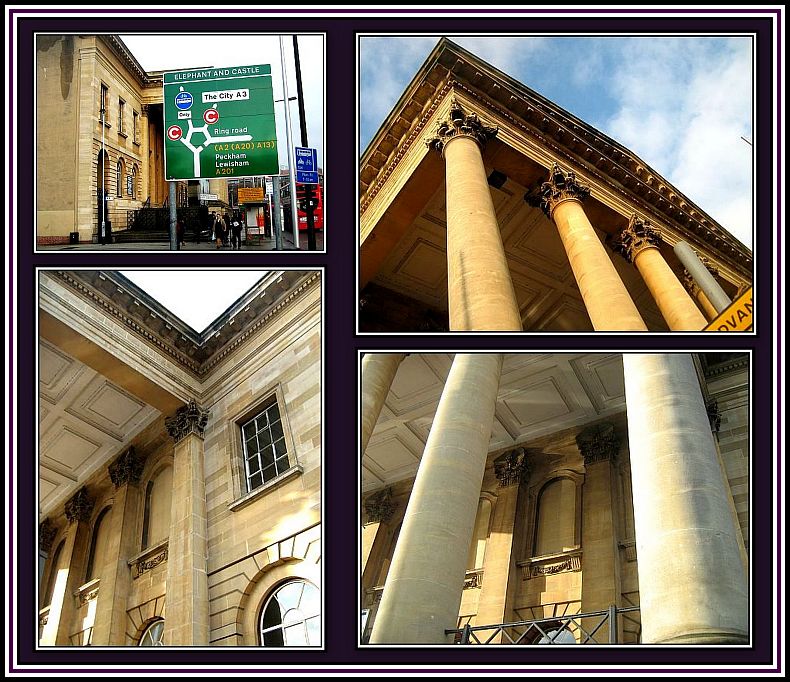
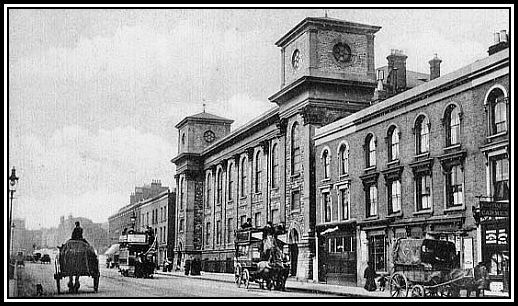
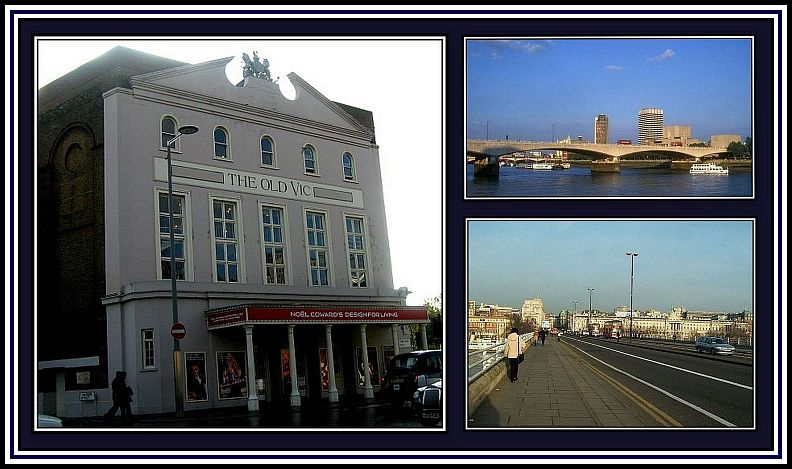
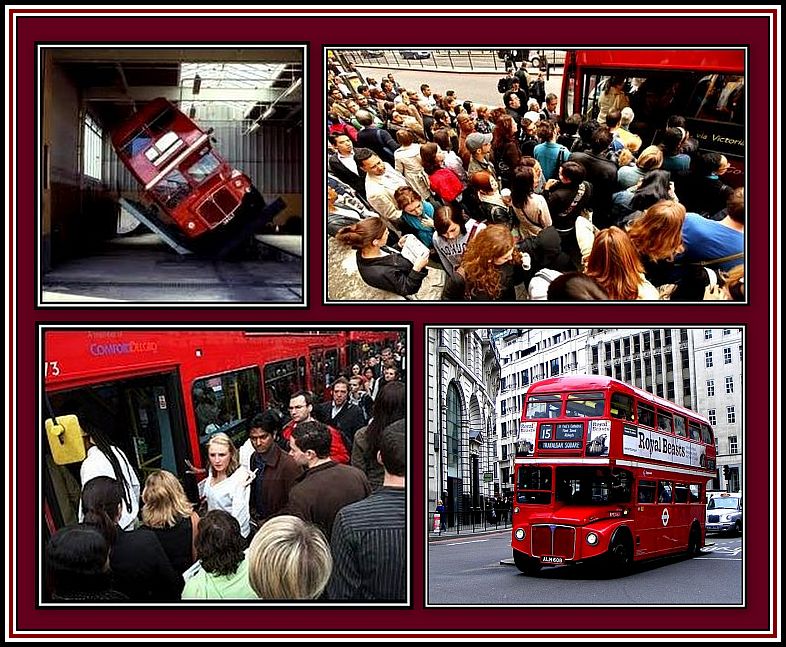
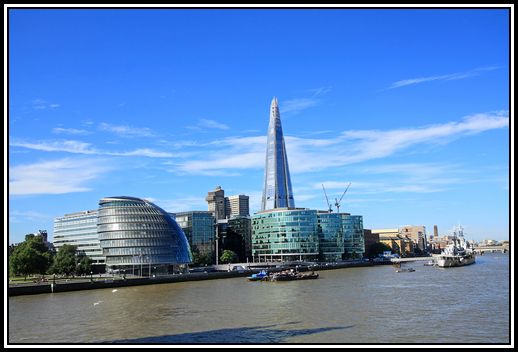
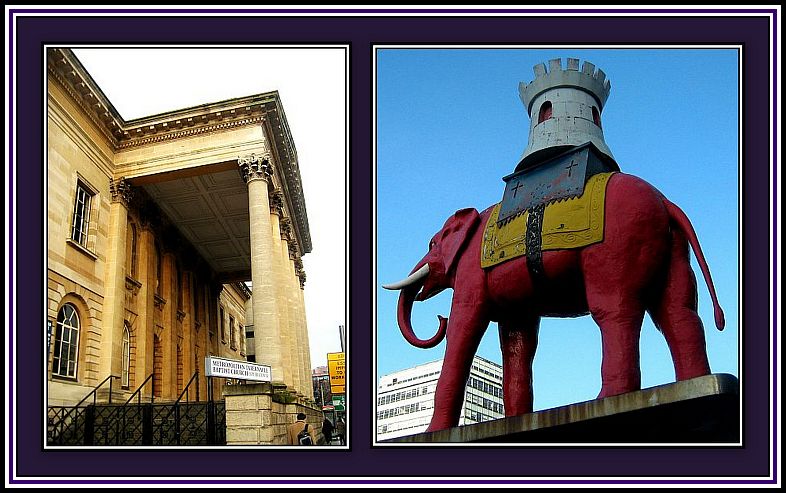
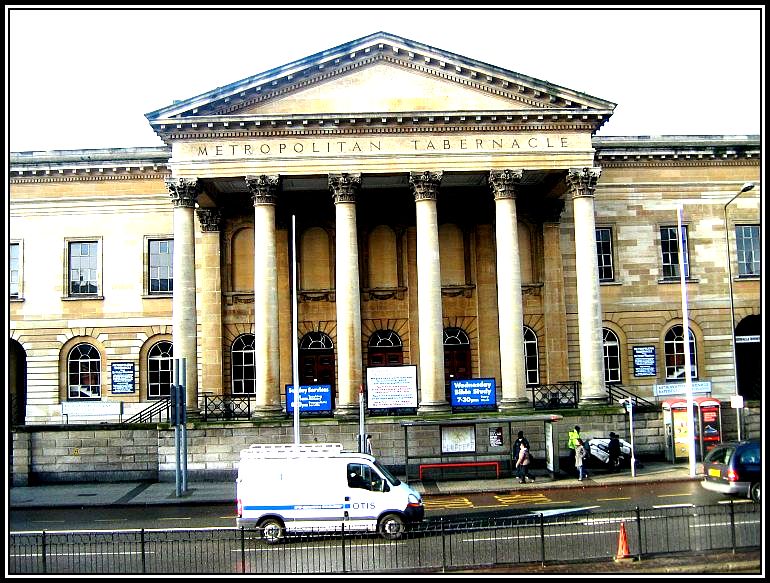
Oh, the Elephant!!! Going up to ‘town’ from Croydon in post-war tram days we had a 3 minute headway service on the alternate 16/18 service so normally cars on both services would be in sight as we got to the stop. If an 18 was in then the 16 would be appearing and we would let the 18 go! Why, well the 18 went via the Elephant! Similarly going home from the Embankment we would take the 18 because the 16 went via the Elephant. It was not the place to travel through even outside rush-hours. Why, oh why, in the thirties was not a gyratory roundabout created as done at North Finchley and Vauxhall. The problem was so bad in Edwardian times that the LCC had to build duplicate tramlines in an attempt to overcome the congestion between the Elephant and St.Georges Circus. Unlike north of the Thames, the road layout on the south side stems from one point, the southern exit of London Bridge. and that goes back to the days of the Canterbury Tales! But the convergence of so many very frequent south London tram services having to go through this only multi-road junction just added to the turmoil. I hate to think what the situation would have been if we had entered the motor-car age without the further Thames bridges and tunnels!!!
Excellent comment. Many thanks. Charles